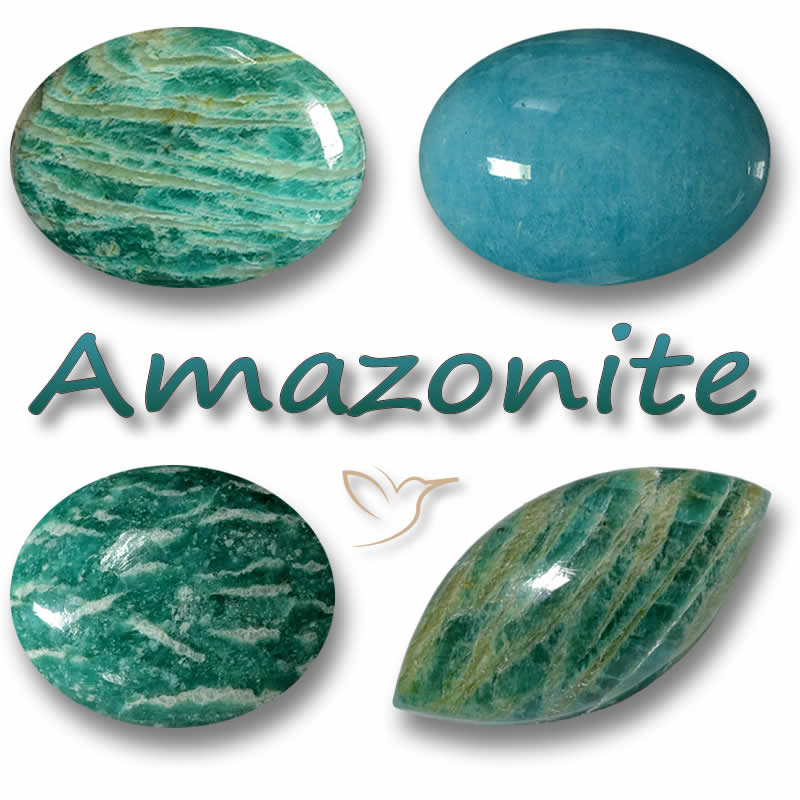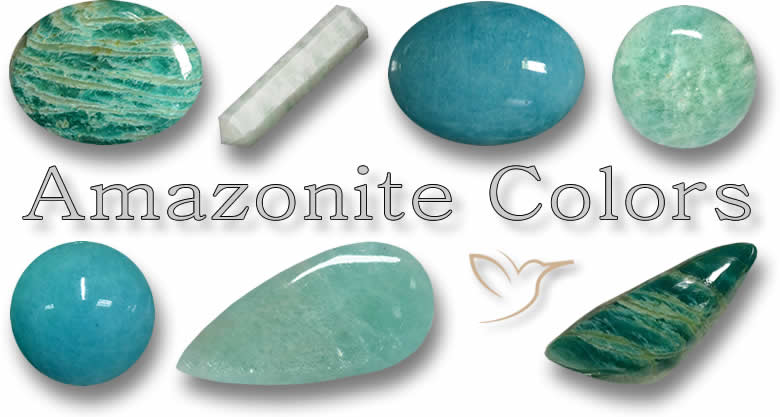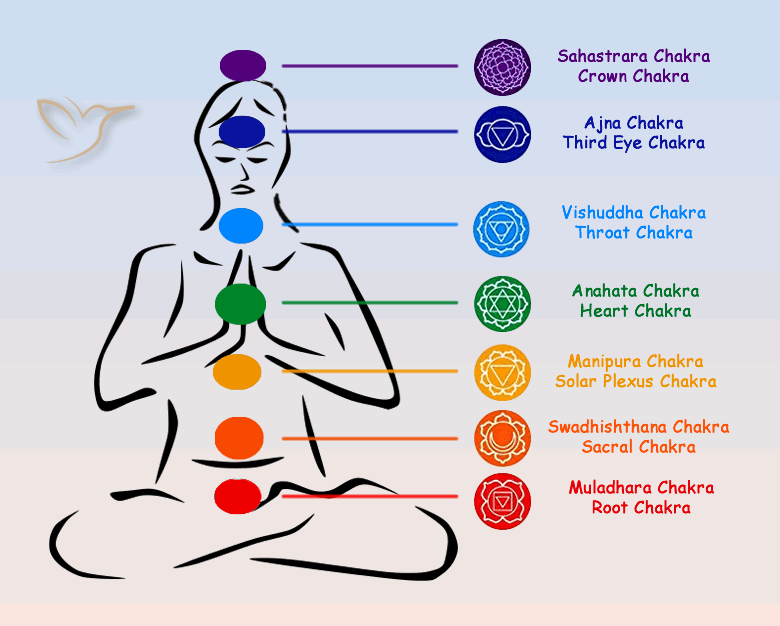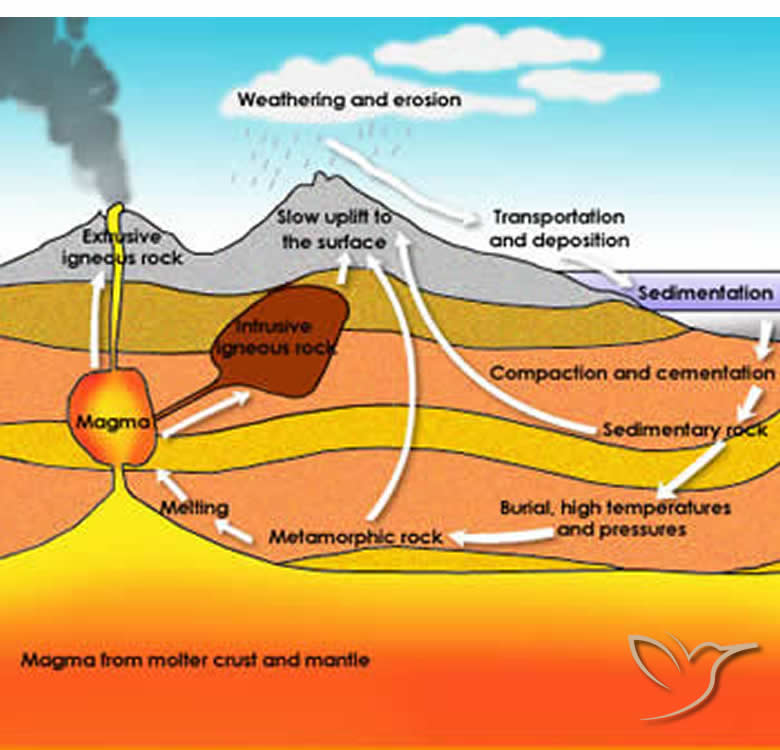What can I find in this article?
- Amazonite Colors
- Why is Amazonite green?
- Amazonite Species
- Amazonite Clarity
- Amazonite Cut
- Amazonite History
- What is the spiritual meaning of Amazonite?
- Amazonite and the Chakras
- Health Benefits of Amazonite
- Amazonite Prices
- Did you know? Interesting facts about Amazonite
- Where is Amazonite found?
- How is Amazonite formed?
- Is Amazonite treated?
- What jewelry is Amazonite suitable for?
- How to take care of your Amazonite jewelry.
- How can you tell a real Amazonite?
- Can Amazonite change color?
- What is so special about Amazonite?
- Amazonite - Gemological Properties
Amazonite Gemstone Information

Introduction
When polished, Amazonite has a waxy and glassy shine so it is not surprising that it was used alongside turquoise and lapis lazuli to make beads, amulets, scarabs in Ancient Egypt. It was also used to decorate and enhance bracelets, armbands and collar pieces as inlaid flourishes on royal jewelry.
Amazonite is a green to turquoise colored gemstone which is translucent or opaque with an off-white background color.
It is a very pretty gem which is a form of the mineral microcline but renamed after the Amazon River in Brazil in an early attempt at marketing probably because the green color is reminiscent of the green jungles and green waters of this South American rainforest.
It is quite a soft stone so in jewelry it is usually made into cabochons or beads and made with very protective settings to safeguard from chipping or cracking. Its interesting beauty and relative uniqueness makes it popular among gemstone collectors and makers of one-off jewelry pieces. It would probably be a more mass-marketed jewelry item if a reliable source of the rough gemstone material could be found but until then it remains a more elusive item.

Amazonite is the green to turquoise form of the mineral microcline although very keen sellers of this gem may include off-white or gray stones with a hint of green as amazonite. The color is caused by minute amounts of lead present during formation although this is a point of contention amongst scientists.
For most of its long life it was thought that amazonite was green because of the presence of copper in its make up however when scientist investigated it was decided that lead impurities were the reason behind its lovely green hue, unfortunately more scientists had some time on their hands and the latest theory is iron impurities! I shall leave them to it and just appreciate the beauty.
Amazonite is sometimes called Amazon Stone or even Amazon Jade even though there are no known sources of this gemstone in either the river or the jungle!
It is in fact a mineral called microcline which comes in a few different colors from white through pink and yellow to green and blue. The green/blue form is the most sought after and was renamed Amazonite to sound a bit more exotic. Other names include Pikes Peak Jade and Colorado Jade but they are all amazonite.
Amazonite is a type of feldspar which is a mineral which makes up a full half of the world’s crust! Other types of feldspar include moonstone, sunstone and labradorite which are also well known gemstones.

Gemstones are generally described as transparent, translucent or opaque. If light enters and exits the surface of a gemstone relatively uninterrupted then we would describe the gemstone as transparent. If the light enters the surface of the gemstone and can exit the gemstone but is slightly or significantly distorted then we would call it translucent. If light cannot penetrate the surface of the gemstone then we would describe it as opaque. Technically this is diaphaneity.
Amazonite is technically translucent but to all intents and purposes it is an opaque gemstone with just a few examples being clear enough for very much light to shine through..
Amazonite appears to be an opaque gemstone so is usually cut as a cabochon to show off its waxy and polished luster to its best. Very occasionally it is has a rose cut to enhance the display of color and shine. The cabochon can also be in large interesting forms to show off the color or pattern.
See our article on "Why Cut as Cabochons?" here

Amazonite, also known as microcline, was given its modern moniker by German mineralogist Johann Breithaupt in 1847. The reasoning behind the choice of this name remains unclear, as the gemstone is not actually sourced from the Amazon River or the Amazon Jungle. It is possible that the name was selected for its exotic appeal, as an alternative to the more mundane titles of microcline or Green Feldspar.
This gemstone, under different names, has been in use since at least the time of the Pharaohs of Ancient Egypt as cut and polished jewelry and beads have been found in tombs of the period, including King Tutankhamun from around 1300 BC. In 2006 two ancient amazonite or microcline mines were discovered in the mountains of the Eastern Desert in Egypt which were the earliest mines found so far, dating back to 1800 BC.
In this gemstone used for centuries as an amulet, carved ornament and decoration we may have found an antidote for one of the modern world’s most potent disorders – electromagnetic pollution. With all the smartphones, lap tops, computers, wifi, Bluetooth devices, GPS circling around us everywhere we go we are constantly exposed to electromagnetic radiation. This has lead to an increase in biological effects on every one of us such as lack of concentration and sleep disorders, an unbalanced nervous system, metabolic disturbances, mental issues, stress, weakened immune systems and many more.
Amazonite is an amazing energy filter, if you work with a computer, tablet, smartphone, x-ray equipment, microwave, one of these gemstones can help cleanse you of their electromagnetic pollution.
Some healing stones contain iron and can be magnetic so should not be kept near your computers but amazonite is perfectly safe for your devices and will help shield you from their harmful influence.
In addition, amazonite is a balancing gemstone, for your masculine and feminine sides or yin and yang, and will enable you to see opinions or feeling from both sides. It will help you clear your mind of cluttered thoughts and help you focus on achieving your goals and dreams. It is also an aid to your creative and imaginative side and is perfect for anyone with ambitions in the artistic pursuits.
Amazonite can also help on the money front – it is the ‘Stone of Success and Abundance’. We do not wish to promote or encourage gambling but this gemstone is often worn or carried by those who love a flutter – it attracts money and good fortune. Away from the betting tables, this stone will allow cool heads to triumph over impulse buying and decisions allowing you to keep a nice grip on your finances.

Chakras are the energy centers in your body also known as Qi or Prana. There are seven Chakras throughout the body each influencing a particular physical, emotional or mental state and each has an associated color. The seven chakras are as follows, Crown linked with the color purple, Third Eye (indigo), Throat (blue), Heart (green), Solar Plexus (yellow), Sacred (orange) and Root (red). Depending on which color is most dominant in your Amazonite gemstone will determine which chakra it will have most influence on.
Amazonite has most influence on the heart and throat chakras because the gemstones are predominantly blue or green. Its affects include communication, eloquence, sincerity and truth while also holding sway with love, relationships and self-acceptance. A necklace or pendant incorporating amazonite gemstones is an ideal way of influencing these two chakra points.
As it is connected to the throat and heart chakra, Amazonite has a direct connection with this area of the body on a physical level including lung and liver issues. It can boost your metabolic rate and aid you in getting good night’s sleep. Amazonite has a direct effect on anything to do with calcium in the body so will help prevent osteoporosis, tooth decay and any form of calcium deficiency.
We are often asked how to use gemstones for spiritual or health benefits and while we are certainly not experts in this field we have gained some experience and knowledge. Of course wearing the gemstone as a piece of jewelry is the easiest way for the crystal to influence your body.
Alternatively they can be placed in your purse or pocket and used as a touchstone throughout the day. Hold crystals or place them in your lap while meditating. Easiest of all, just lay down with crystals on your body, lined up with the chakra points if possible. Put them in the bath (check the particular stone is impervious to water). Decorate your home with crystals, certain crystals boost the working environment so keep them on your desk, other help you relax so keep them in the lounge or living room.
Amazonite should be cleaned every week to keep it at its maximum potential. You can do this by running the stone under warm water and drying it in the sun for about an hour. Keeping some mint near or on the gemstone will also help recharge amazonite.
Amazonite Price List |
||
| Color | Weight range | Price range / USD |
|---|---|---|
Green / Blue-Green |
1ct and more |
$0.3 - $2/ct |
Whenever we price colored gemstones the first this to look at is the color! It is no different with amazonite, nice bright blues, greens or greenish-blues with any streaks as pale a white as possible are the most sought after gemstones.
Although it is technically translucent, amazonite appears to be opaque in most cases so will nearly always be cut as a cabochon and not faceted. A nice even cut to show off the color and brightness is best with a lovely shine and polish.
Amazonite can come in large sizes so will make some striking cabochon gemstones either round, oval or interesting shapes according to the color and the pattern. Even the larger sizes are very affordable through our wholesale prices.
- Amazonite is the Birthstone for Virgos
- Amazonite is not an official birthstone or a wedding anniversary gemstone however it is treasured as a birthstone for those born under the Virgo astrological sign.
- Amazonite is one of the oldest used gemstones
- In an archaeological dig undertaken in southern Jordan more that 2000 fragments of amazonite jewelry were discovered dating back to neo-lithic times (stone-age man) perhaps 10,000 years ago!
- Legend has it that the Amazonians, a tribe of fierce warrior women decorated their battle gear with this gemstone.
- Amazonite is a very rare variety of the most common mineral in the earth's crust, feldspar.
- The seventh chapter of the Book of the Dead which guided ancient Egyptians through death and into the afterlife was engraved on Amazonite.

These days amazonite is mostly to be found in China and Mongolia in East Asia, in the Ural Mountains of Russia, southern and eastern Africa, Brazil (though not in the Amazon region!) and in Colorado and Virginia in the United States.
The USA has exceptionally fine deep blue and green deposits in Pikes Peak, Devils Head, Lake George and Florissant in Colorado. All amazonite mined from this area is called "Pikes Peak Amazonite", as all the material from this area is almost identical. Deep green amazonite has been found in the Kola Peninsula, Russia and the famous mines of Minas Gerais, Brazil as well as Mogok in Burma or Myanmar and Sidamo-Borana Province in Ethiopia.

Amazonite is a trade name for the green or blue colored gemstone, microcline. Microcline is a form of orthoclase feldspar, and feldspar makes up most of the earth’s crust. Feldspar is a very useful material as it can be used in making glassware, pottery, paint filler, buildings, and, as in the case of amazonite, gemstones.
Feldspar is found all over the world in all types of rock formation, igneous, metamorphic and sedimentary. Feldspar is made up of silica and aluminium and forms in a number of ways, for example during crystallization of magma or lava, being subject to high temperatures and great pressure below the earth’s surface or crushed in sedimentary rock.
Some of the finest amazonite is found in Colorado, at Pikes Peak the highest point in the southern Front Range of the Rocky Mountains at well over 4,000 metres.
The granite rock found here is over a billion years old and was formed by magma rising from the earth’s depths. This granite lay about 1.5 km below the surface and over a period of millions of years other magma intrusions forced their way into this granite, forcing it up into mountain ranges, remelting it and recrystalizing it to form the amazonite microcline that can be found now in mines at nearly 3000m in elevation.
Apart from the standard cutting and polishing treatment that the rough stones receive, amazonite is not treated in any way. It is possible to come across dyed amazonite – usually cheap beads in large quantities – and this is fine so long as they are clearly labelled but they have an unnatural coloring which is not as pleasing as the real thing. Any amazonite which has an outrageous or very even color throughout should be viewed with suspicion and while amazonite is a very affordable gemstone you should not expect anything too cheap to be a natural gemstone.
Amazonite has been crafted into jewelry for 1000s of years but it is only rated 6 on the Mohs hardness scale so things like pendants, necklaces, earrings and brooches are better than rings and bracelets as they are less likely to be chipped or cracked in daily use. They could make gorgeous cabochon cut rings but would need a nice protective bezel setting to be on the safe side.
Read our detailed article on the Mohs hardness scale here
Over history, Amazonite has been carved into interesting shapes and designs such as animals, flowers, motifs or cameos and this has remained a popular way to use amazonite to this day.
At 6 in hardness amazonite are relatively soft for a gem but durable enough to survive the odd bump or knock on a hard surface however you should always take care to avoid such abuse. That is why it is always recommended to remove jewelry before physical activities, especially household cleaning, sports or gardening.
When storing your amazonite care should be taken to keep them away from any harder materials which may scratch, chip or break them. Keep them in individual cloth bags or boxes for extra protection.
Careful: ultrasonic cleaners can not only cause and exacerbate fractures in gemstones, they can loosen jewelry and cause gems to fall out of their settings. Steam cleaners should not be used to clean amazonite because the color can fade in high temperatures. Clean your amazonite using a soft cloth and only mild soap or detergent if needed and never use bleach or harsh chemicals.

Obviously buying gemstones from a reputable dealer is the best approach but this is not always possible when you are out searching for a great gemstone or a bargain!
Amazonite is not a very expensive gemstone so is not often the victim of counterfeit or fake efforts but some unscrupulous dealers may try to pass off a glass or a lesser quality stone as an amazonite. Despite this, the relative affordability means it is hardly worth the expense of an appraisal so a few handy tips in identifying an amazonite would be useful.
First of all, Amazonite has a vitreous luster, that is, it should be smooth and almost waxy, shiny and bright. Second is color. Amazonite is the blue to green version of microcline so it should fall into this color category, anything else should be viewed with suspicion. Amazonite is not a very hard gemstone but it is hard enough not be scratched by your fingernail or a copper penny so that could be a quick test for your sample. Glass or a penknife is a little too close in hardness to amazonite so will not be a certain gauge of authenticity.
Amazonite is a translucent to opaque gemstone, so with the better quality gemstones some light will shine through so hold it up to the light and check that light is able to pass through the gem, if not then it is an opaque gemstone, therefore not so valuable.
This is not a complete guide on how to spot a fake or lesser gemstone but I hope it helps.
At GemSelect, we stand by our gemstones as being as we describe them, any treatments are disclosed and our return policy means you can feel quite assured when ordering from us.

Some gemstones show a distinct or dramatic change in color under different light sources. Look at a garnet under electric or artificial light and it could look red, take it outside into the sunlight and all of a sudden it is green! This remarkable effect only occurs in a few gemstones, Alexandrite, Garnet and some Sapphires being the most well known but does NOT occur in amazonite.
If you have interest in color-change gemstones, please see our stock of color-change gems here
This lively green gemstone is loved and admired by all who get their hands on one, not just the color but the smooth waxy texture and the shine which comes from a well polished gemstone.
Amazonite's unique patterns, swirls and stripes make them a particular favourite of artisan jewelry makers who know they will have a one-of-a-kind piece when they have completed their work.
The history of this gemstone bears much of its appeal, knowing that our cave dwelling ancestors also searched for, revered and created adornments with this very same precious stone gives a feeling of pride and fulfillment. Finally in a world of stress and pressure, surrounded by electronic paraphernalia it is reassuring to have such a soothing spiritual gemstone by your side, filtering out the electronic smog and reminding you of the natural environment we need to enjoy and preserve.
Chemical Formula: |
KAlSi3O8 Potassium aluminum silicate |
Crystal Structure: |
Triclinic, prismatic |
Color: |
Green, blue, green, gray, multicolor (white color of streak) |
Hardness: |
6 - 6.5 on the Mohs scale |
Refractive Index: |
1.522 - 1.530 |
Density: |
2.56 - 2.58 |
Cleavage: |
Perfect |
Transparency: |
Translucent to opaque |
Double Refraction or Birefringence: |
-0.008 |
Luster: |
Vitreous |
Fluorescence: |
Weak, olive-green |

